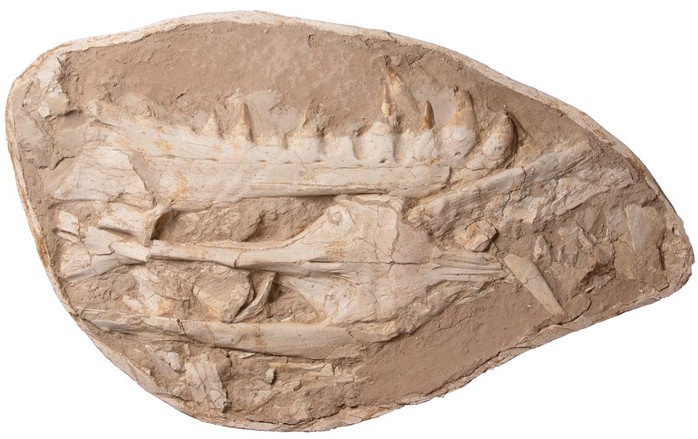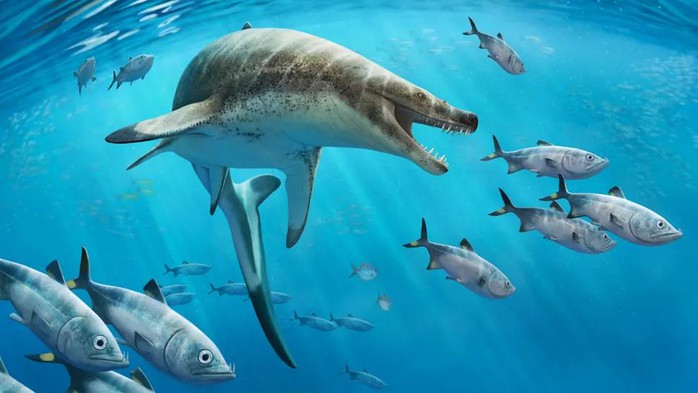According to Live Science, a multinational research team has just added a new species to the list of fearsome marine reptiles of the Cretaceous period: Khinjaria acuta.
The name comes from the Arabic word "khinja," which means "dagger"; as well as the Latin word "acuta," which means "sharp." It also describes the monster's jaws: Dense with large, dagger-like teeth.

Part of the monster's jaw was excavated - Photo: UNIVERSITY OF BATH
Meanwhile, a paleontologist from the University of Bath (UK), one of the multinational research teams, called it a "nightmare" marine reptile.
Not only did it have hideous jaws, the creature also had a giant body 8m long, quite as fat as the Komodo dragon - one of its living relatives - while the size and agility were comparable to killer whales.

"Nightmare" marine reptile Khinjaria acuta - Graphic image:
The skull and partial skeleton of this "nightmare" marine reptile were found in a phosphate mine near the Moroccan port city of Casablanca.
According to co-author Professor Nour-Eddine Jalil from the National Museum of Natural History in Paris (France), analysis of the skull shows that this species had a terrible bite force.
Dr Nick Longrich from the University of Bath said it posed a threat to fish, sea turtles and other marine reptiles during the period.
Khinjaria acuta is also identified as a species of mosasaur. In addition to the Komodo dragon, it is also a relative of another modern species, the giant anaconda.
The newly excavated specimen dates back 66 million years, to the end of the Cretaceous period, right before the Chicxulub asteroid disaster that wiped it and all other mosasaurs, ichthyosaurs, pterosaurs, and dinosaurs off the planet.
However, scientists believe that this species may have dominated the oceans during the Cretaceous period, 145 million years ago.
The new discovery adds to the growing body of knowledge about mosasaurs, a group of once-deadly marine reptiles that were larger than most other marine animals. They were also highly diverse in morphology, with tooth types and hunting styles varying somewhat between species.
Source: https://nld.com.vn/xuat-hien-loai-moi-bo-sat-bien-ac-mong-dai-8-m-196240311105508861.htm
























![[Photo] General Secretary To Lam receives Korean Ambassador to Vietnam](https://vphoto.vietnam.vn/thumb/1200x675/vietnam/resource/IMAGE/2025/6/6/a0765b7543784cbcbfe4755b67d43ab4)

![[Photo] President Luong Cuong works with Hung Yen and Thai Binh Provincial Party Committees on implementing Resolution of the 11th Central Conference, 13th tenure](https://vphoto.vietnam.vn/thumb/1200x675/vietnam/resource/IMAGE/2025/6/6/127b735d2761484d81dcee0d7725a25b)



























































![[OCOP REVIEW] Tu Duyen Syrup - The essence of herbs from the mountains and forests of Nhu Thanh](https://vphoto.vietnam.vn/thumb/402x226/vietnam/resource/IMAGE/2025/6/5/58ca32fce4ec44039e444fbfae7e75ec)










Comment (0)